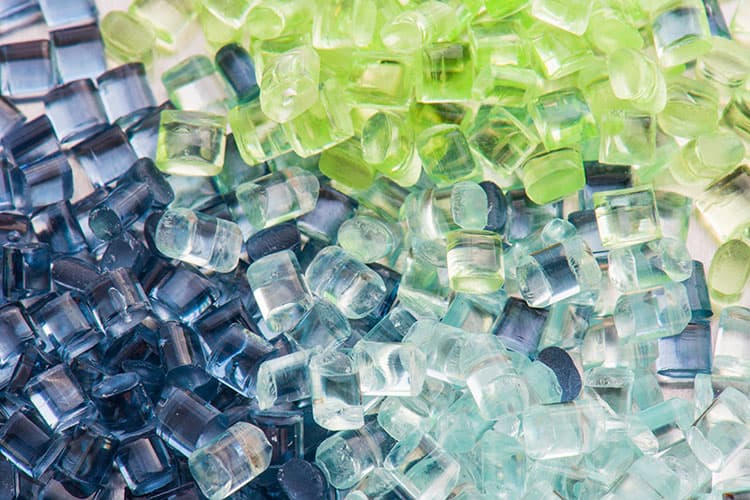In the competitive world of industrial packaging, manufacturers are under constant pressure to reduce costs while maintaining quality and performance. For producers of plastic cement bags, filler masterbatch has emerged as a practical and cost-effective solution. In this article, we’ll explore what filler masterbatch is, how it helps save manufacturing costs, its added performance advantages, tips for choosing the right formulation, along with common challenges and how to overcome them.
1. What is Filler Masterbatch?
Filler masterbatch is a compound made by combining a high concentration of inorganic filler – such as calcium carbonate (CaCO₃) or talc – with a thermoplastic resin carrier like polyethylene (PE) or polypropylene (PP). It is commonly used in plastic manufacturing to reduce material costs and modify specific properties of the final product.
This masterbatch is typically added during the extrusion or molding process, allowing for easier dispersion of fillers into the base polymer. The formulation may vary depending on the filler type, particle size, and intended application, but the goal is to maintain consistent quality and compatibility with the base plastic.
Filler masterbatch plays an important role in various industries, especially in packaging, film, injection molding, and extrusion. One of its widespread applications is in the production of plastic cement bags, where it helps optimize material usage and processing.
By incorporating filler masterbatch, manufacturers can meet both economic and technical demands across different plastic products, including plastic cement bags and other heavy-duty packaging solutions.

2. How Filler Masterbatch Lowers Costs in Plastic Cement Bags Manufacturing?
Reducing manufacturing costs is a top priority for producers of plastic cement bags. Filler masterbatch offers several practical ways to cut expenses without compromising product quality or production efficiency.
Replacing Virgin Polymers
One of the most direct cost-saving benefits of filler masterbatch is its ability to partially replace virgin polymer resin. Virgin PP or PE is significantly more expensive than mineral fillers like CaCO₃. By incorporating filler masterbatch into the formulation, manufacturers can reduce the amount of virgin polymer used per bag – resulting in substantial material cost savings over time.
High Filler Loading
Modern filler masterbatch formulations allow for high filler loading (often up to 60%), depending on performance requirements. This means more filler content per kilogram of plastic compound, leading to lower raw material costs per unit. In plastic cement bags, this approach is especially useful because strength and durability can still be maintained while optimizing costs.
Improved Production Efficiency
Filler masterbatch enhances extrusion process stability, reduces die build-up, and improves heat transfer. These factors contribute to faster cycle times, lower energy consumption, and reduced machine wear. Increased output per hour also means lower labor and operational costs, making the overall production of plastic cement bags more efficient.
Case Study: North African Manufacturer Reduces Costs in Plastic Cement Bags Production with EuP Egypt’s Filler Masterbatch
Context:
A mid-sized packaging manufacturer in North Africa was experiencing escalating production costs for their plastic cement bags, primarily due to heavy reliance on virgin polypropylene (PP) resin. The increase in global polymer prices was threatening the company’s profit margins and its ability to stay competitive in the construction packaging market.
Challenge:
The company produced high volumes of woven plastic cement bags but faced significant cost pressure from the expensive virgin polymer input. Although durability and print quality were critical to meet customer requirements, the manufacturer needed an alternative solution to cut costs without sacrificing performance.
EuP Egypt’s Solution:
EuP Egypt proposed reformulating the company’s bag production blend by incorporating 40% calcium carbonate-based PP filler masterbatch. This masterbatch was engineered to ensure excellent dispersion, thermal stability, and compatibility with the manufacturer’s existing extrusion and weaving systems for plastic cement bags.
Results:
By integrating EuP Egypt’s PP filler masterbatch into their process, the manufacturer achieved:
- 28% reduction in raw material costs by cutting down on virgin PP usage
- 12% increase in production output thanks to improved thermal conductivity and smoother processing
- Zero compromise in product performance, with bags maintaining strength, printability, and dimensional stability
This strategic shift allowed the company to deliver competitively-priced plastic cement bags while preserving the product integrity that their clients relied on.

3. Additional Benefits for Cement Bags
Beyond cost reduction, filler masterbatch provides several performance advantages that enhance the quality and durability of plastic cement bags. These benefits help meet the demanding requirements of cement packaging, such as load resistance, print clarity, and shape retention.
Enhanced Stiffness and Tensile Strength
When properly formulated, filler masterbatch can increase the stiffness of plastic films and woven fabrics used in cement bags. This added rigidity improves handling, stacking, and resistance to deformation during transport and storage. In woven plastic cement bags, it also contributes to better tensile strength, helping bags hold their shape and contents securely even under high weight.
Improved Printability
Surface properties of the final product are improved through the use of high-quality fillers with fine particle sizes. This results in better ink adhesion and sharper print definition. For plastic cement bags, clear branding and product information are essential for marketing and regulatory purposes – making improved printability a key advantage.
Reduced Shrinkage and Better Dimensional Stability
Filler masterbatch helps reduce shrinkage during cooling, which leads to better dimensional stability. This is especially important in plastic cement bags, where uniform size and consistent shape affect bag filling efficiency, palletization, and end-user handling. Stable dimensions also reduce the risk of packaging failure during transportation.

4. Choosing the Right Filler Masterbatch for Plastic Cement Bags Production
Selecting the right filler masterbatch is a critical step in ensuring both cost-efficiency and performance consistency in the production of plastic cement bags. An unsuitable formulation can lead to processing issues, compromised bag strength, or visual defects. Below are the key factors that manufacturers should evaluate:
Filler Type and Purity
The most widely used filler in cement bag production is calcium carbonate (CaCO₃) due to its low cost, high availability, and suitable mechanical properties. However, the purity of the filler greatly affects the final product. Impurities such as heavy metals or oversized particles can cause poor dispersion, bag defects, and machine wear. Therefore, you should use high-purity CaCO₃ with a controlled particle size (often <2 microns) for better blending and surface finish.
Particle Size and Dispersion Quality
Finer filler particles improve the smoothness, mechanical strength, and printability of cement bags. They also ensure better dispersion within the polymer matrix, preventing defects like streaking or weak spots. Poor dispersion can compromise the durability of the bags and lead to frequent production issues. Using a masterbatch with well-controlled particle size and high dispersion quality ensures uniform properties and consistent output.
Carrier Resin Compatibility
The carrier resin must be compatible with the base polymer used in the production process, commonly polypropylene (PP) for woven plastic cement bags. Using incompatible carriers (e.g., PE with PP) can result in poor mixing, delamination, and mechanical failure. The best practice is to match the carrier resin to your base resin, or consult your supplier for a universal blend suited to your application.
Filler Loading Capacity
A high-quality filler masterbatch should allow for a high filler loading without compromising the bag’s strength or performance. Attempting to use high filler content with low-grade masterbatch may lead to tearing, cracking, or poor sealing. Manufacturers should test different loading levels to find the optimal balance between cost savings and product quality.
5. Challenges and Solutions
While filler masterbatch offers cost and performance advantages, manufacturers may encounter certain challenges during application. Understanding these issues, and how to solve them, is key to maintaining high productivity and consistent product quality.
Issue 1: Poor Dispersion of Fillers
Challenge:
One of the most common issues in the use of filler masterbatch is poor dispersion of filler particles within the polymer matrix. When dispersion is inadequate, it can result in visible defects like streaks, uneven coloration, or inconsistent film thickness. More critically, poorly dispersed fillers create weak zones in the material, compromising the mechanical strength of plastic cement bags, especially when under heavy load or in high-stress environments.
Root Causes:
- Use of low-quality masterbatch with large or irregular filler particles
- Incompatible processing temperatures or insufficient mixing time
- Overloaded filler content exceeding the masterbatch’s dispersion capacity
Solution:
To overcome this, manufacturers should select high-quality filler masterbatches that use finely ground, coated fillers designed for excellent dispersion. These masterbatches are typically produced using twin-screw extrusion, which ensures uniform distribution of filler in the carrier resin. Additionally, processors should regularly monitor melt flow and perform quality checks to detect signs of poor dispersion early in the production cycle.
Issue 2: Increased Wear on Machinery
Challenge:
Some mineral fillers, especially if uncoated or large in size, are abrasive and can cause increased wear on critical machine parts such as screws, barrels, dies, and molds. This leads to more frequent maintenance, unexpected downtime, and higher repair costs, particularly for manufacturers operating at high volumes of plastic cement bags.
Root Causes:
- Use of coarse or untreated filler materials
- High filler loading without considering abrasiveness
- Operating at inappropriate screw speed or pressure settings
Solution:
To reduce wear, it’s essential to use filler masterbatches with surface-treated (coated) fillers, which reduce friction and abrasive interaction with metal components. Fine particle size fillers also contribute to smoother flow through the extruder and die. In parallel, maintaining proper processing conditions, such as moderate screw speed and optimal melt temperature, can further extend equipment lifespan. Some manufacturers also invest in wear-resistant screw coatings as a long-term preventive measure.
6. EuP Egypt – World’s Filler Masterbatch Manufacturer For Plastic Cement Bags Manufacturing
At EuP Egypt, we take pride in being a global leader in plastic additives and masterbatch solutions. Our filler masterbatch is one of our flagship products, specially engineered to support cost-effective and high-performance production of plastic cement bags – helping manufacturers reduce reliance on virgin polymers while maintaining excellent mechanical and printing properties.
Here are some reasons why you should partner with EuP Egypt – World’s Filler Masterbatch Manufacturer:
Industry Expertise and Global Reach
With over 17 years of experience, EuP Egypt has established itself as a leading filler masterbatch manufacturer, serving clients from more than 90 countries across the world. We specialize in developing tailored solutions for packaging applications, especially high-performance masterbatches used in woven and laminated plastic cement bags.
Advanced Manufacturing and Quality Control
EuP Egypt operates state-of-the-art production facilities equipped with twin-screw extruders, automated batching systems, and in-house laboratories. These capabilities allow us to produce masterbatches with:
- Excellent dispersion and consistent particle distribution
- High filler loading capacity
- Tight quality control over brightness, particle size, and moisture content
- Carrier resin compatibility with both PP and PE applications
Each batch is tested for mechanical strength, melt flow index, and processing stability to ensure it meets the technical demands of modern plastic bag production lines.
Customized Solutions for Cement Bag Manufacturers
Understanding that different markets have unique requirements, EuP Egypt offers a comprehensive range of filler masterbatch designed to meet the specific technical requirements of various applications. Our products include PE filler masterbatch, PP filler masterbatch, Transparent filler masterbatch and HIPS filler masterbatch. Whether a producer is looking for improved stiffness, better printability, reduced shrinkage, or resistance to UV exposure, EuP works closely with clients to deliver the right solution.
Technical Support and Consultation
Beyond supplying products, EuP Egypt provides technical consultation, material testing, and on-site support to help manufacturers optimize masterbatch dosage, machine settings, and processing conditions. This collaborative approach ensures customers achieve consistent bag quality while maximizing operational efficiency.

7. Conclusion
Filler masterbatch significantly transforms plastic cement bag manufacturing by cutting raw material costs, improving processing efficiency, and enhancing bag performance in strength, printability, and stability. It’s an essential solution for high-output, cost-sensitive production environments.
For manufacturers aiming to stay competitive in the packaging industry, it’s the smart choice. Ready to elevate your production? Contact EuP Egypt for customized filler masterbatch solutions today!





